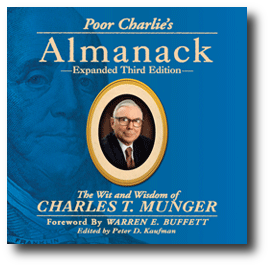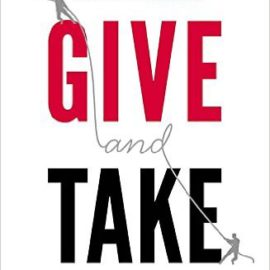
In 1951, a 30-year-old African-American woman named Henrietta Lacks entered Johns Hopkins Hospital to be treated for cervical cancer. In a matter of months she was dead, overcome by her cancer’s malignancy. Her cancer cells, however, would prove immortal—and change medicine forever.
The Immortal Life of Henrietta Lacks tells the story of Henrietta, her family, and her incredible cells. Tracking both the scientific advances owed to “HeLa” cells and the struggles of Henrietta’s descendants, author Rebecca Skloot leads readers through the history of cell research, the ethical implications of scientific study, and the human story of a poor and ailing family whose matriarch contributed to some of 20th-century science’s greatest achievements.
1-Page Summary of The Immortal Life of Henrietta Lacks
A massive bestseller when it was published in 2010 and the basis for an HBO miniseries of the same name, The Immortal Life of Henrietta Lacks tells the story of Henrietta Lacks, a young African-American woman killed by a particularly vicious form of cancer, and her incredible cancer cells, which opened up entirely new directions in scientific research due to their “immortality”—their capacity to grow rapidly and unstoppably outside of her body.
The author of the book, science reporter Rebecca Skloot, spent 10 years researching Henrietta Lacks, her family, and the scientific advances her indefatigable cells made possible. In the course of her reporting, Skloot became close with Deborah Lacks, Henrietta Lacks’s daughter, and much of The Immortal Life of Henrietta Lacks is devoted to Deborah’s struggles with her mother’s absence and scientific legacy.
1920s–1950s
Loretta Pleasant, called Henrietta, was born in 1920 in Roanoke, Virginia, and raised in a small town in Virginia called Clover. At fourteen, she gave birth to her first child, a son named Lawrence; the father was her cousin, David “Day” Lacks. Four years later, she had a second child by him named Lucile Elsie, whom everyone called Elsie and who evidenced traits of a developmental disability. (Elsie would later be institutionalized.)
Day and Henrietta were married in 1941, and shortly thereafter, they moved to Turner Station, a booming industrial neighborhood in Baltimore. They had three more children—David, Jr. (Sonny), Deborah, and Joe (later Zakariyya)—the last in 1950.
In 1951, Henrietta went to Johns Hopkins Hospital after discovering a lump on her cervix. Her doctor took a sample of the lump for a biopsy. The tumor proved malignant, and Henrietta began to undergo radiation treatments—which, at the time, consisted of radium plaques placed directly on the tumor.** The surgeon performing the initial treatment, without telling Henrietta, excised two slivers of tissue from her tumor for a researcher at Hopkins named George Gey**.
Growing human cells in “culture”—i.e., in test tubes in the lab—had been an elusive advance for scientific researchers; most human cells lasted a few days then died. Henrietta’s cells, however—dubbed “HeLa” by Gey’s lab technician—grew at a constant rate, doubling every 24 hours. Suddenly Gey had an inexhaustible supply of human cells on which to conduct experiments.
Henrietta’s cancer, meanwhile, seemed to be responding well to the radiation. The initial radium treatment had shrunk the tumor, and subsequent X-ray treatments caused the tumor to disappear entirely. Unfortunately, the radiation had a gruesome side effect: it burned the skin of her torso black.
Sometime after her course of treatment ended, Henrietta began to feel aches in her abdomen. Initially the doctors found nothing wrong, but after Henrietta returned to Hopkins several times, a doctor ordered an X-ray and found a mass blocking her urethra. It was inoperable. In a matter of weeks tumors colonized her body, and she was admitted to the hospital to undergo treatment to ease her pain and perhaps prolong her life. She died on October 4, 1951, less than a year after she first visited Hopkins.
After an autopsy, during which more samples were taken from Henrietta’s body without her family’s informed consent, Henrietta was buried in Clover in an unmarked grave.
In a cruel twist, as Henrietta’s health declined, HeLa cells were energizing cell research. George Gey had developed effective and reproducible cell culturing and preservation techniques, and he was sending HeLa cells all over the world.
Progress in Science
Around the same time that Henrietta was buried, an ambitious study was launched to prove the effectivity of Jonas Salk’s polio vaccine. The study necessitated a tremendous number of cultured human cells—HeLa cells, initially provided by George Gey and grown in massive quantities at the Tuskegee Institute, the renowned black university.
HeLa cells were subsequently used in an array of research—genetics, virology, infectious and sexually transmitted diseases, even cosmetics. HeLa cells were the first cells to be cloned, and they were bombarded with radiation to see how they responded (it was the Cold War era, after all). They were also the first cells to be cultured commercially, for profit.
1950s–1960s
The Lacks family was oblivious to the scientific and commercial value of Henrietta’s cells—they didn’t even know her cells had been taken. While HeLa was growing all over the world, the Lacks family was dealing with the aftermath of Henrietta’s death.
Perhaps the most destructive outcome of Henrietta’s death was that Henrietta’s adult cousin, Galen, and his wife, Ethel, moved in with the Lackses. Deborah, only ten years old, was physically abused and pursued sexually by Galen, and all the children, but especially Joe, were beaten by Ethel. Ethel’s abuse of Joe would cause permanent emotional damage: Joe, who would later change his name to Zakariyya in jail after being found guilty of murder, would struggle with anger his entire life.
Having escaped Ethel and Galen by moving in with her brother Lawrence, Deborah had her first child at 16 and married the father when she was 18. After the birth of their second child, Deborah’s husband began using drugs and physically abusing her. When she started to contemplate killing him, she knew she had to leave; she took her children and moved back in with her father.
Progress in Science
During this same period, while Henrietta’s children suffered, her cells were at the heart of a sequence of scientific crises both ethical and institutional.
In the early 1960s, a cancer researcher at Sloan-Kettering began injecting both cancer-afflicted and healthy patients with HeLa cells to determine their effects on human beings. Controversially, the doctor did not adequately explain—if he explained at all—what he was doing to the patients. When the doctor partnered with the director of medicine at a Jewish hospital in New York to inject its patients with HeLa, three doctors at the hospital objected and informed the press. The objecting doctors were steeped in the “Nuremberg Code”—the set of guidelines drafted for scientific researchers after the discovery of atrocities committed by Nazi doctors.
Like this summary? Want to learn more from books than ever? You'll love my product Shortform.
Shortform has the world’s best guides to 1000+ nonfiction books and articles. Even better, it helps you remember what you read, so you can make your life better. What's special about Shortform:
- The world's highest quality book guides - we discuss the book's main ideas, with expert analysis and commentary expanding will beyond the book
- Interactive exercises that teach you to apply what you've learned
- Discussion communities - get the best advice from other readers
Sound like what you've been looking for? Sign up for a 5-day free trial here.
Then, in the mid-1960s, a geneticist shocked a cell-culture conference by presenting evidence that many of the ostensibly discrete cell lines which scientists had succeeded in culturing were actually HeLa—because of HeLa’s ubiquity and malignancy, it had contaminated most other cell lines. The discovery undermined an array of recent theories of cell behavior and negated decades of work and millions of dollars of funding.
The news surrounding HeLa in this era wasn’t all bad, however. HeLa cells were shot into space on both Russian and American satellites, and they were even fused with chicken and mice cells!
1970s–1980s
It was only in 1973 that the Lackses began to learn what had been done with Henrietta’s cells. A geneticist’s assistant called the family out of the blue to draw blood—the geneticist was attempting to fight the rampant HeLa contamination of cell cultures—and told Day that Henrietta’s cells were still living. However, Skloot’s reporting uncovered that the family didn’t fully understand either the significance of Henrietta’s cells or the geneticist’s reason for drawing blood. The family believed they were being tested for cancer—an impossibility at the time—not helping scientists in the fight against cell line contamination.
In 1975, a _Rolling Stone _reporter writing a story on the widespread contamination of cell lines with HeLa reached out to the family. He discovered that their understanding of HeLa was piecemeal at best and tried to explain cell science to them as well as he could. When the article came out, Lawrence and Sonny Lacks became even more interested in their mother’s cells: The article alluded to commercial businesses that sold vials of HeLa cells. (As of 2009, a company called Invitrogen was selling HeLa-derived products for anywhere from $100 to $10,000 per unit.)
Deborah, meanwhile, was simply trying to increase her knowledge about what had happened to her mother. She sought answers in biology textbooks and dictionaries and wrote wrenching diary entries that found her imagining the pain her mother endured while being treated.
When the article appeared in 1976, it had a major impact in the wider culture. It was the era of the Black Panthers, and scholars and activists had uncovered widespread abuses of research subjects and medical patients on the basis of their race. The Lacks family themselves had grown up in the shadow of Hopkins, hearing about “night doctors” who snatched African-Americans off the street for gruesome experiments. The cultivation of Henrietta’s cells without her or her family’s consent—and the economic difficulties of her kin—became a testament to the persistent power disparities between Blacks and Whites in the U.S.
The Lacks family continued to struggle in the 80s. Deborah’s son Alfred Jr. had been arrested several times although he was only 18; Zakariyya had been released from prison early, but he had trouble keeping a job and often slept on the street; and Deborah came across an article that detailed the suffering of Henrietta’s final days—somehow the author was given access to Henrietta’s medical records—which caused Deborah to have an emotional breakdown.
Although the family wasn’t aware of it, a lawsuit filed in 1984 had direct relevance to their situation. A patient with a rare kind of leukemia had had his cells removed and cultured without his informed consent, and his doctor had entered into million-dollar agreements to develop commercial products from the patient’s cell line.
The case eventually landed in the California Supreme Court, where the judges ruled in favor of the doctor. They determined that, once cells are removed from a person’s body, they’re no longer that person’s property, and that granting people’s ownership over their cells would hamper scientific research.
The court did agree with the patient on two points, however: The patient should have been informed of his doctor’s financial interests, and the doctor breached his fiduciary duty by misleading his patient.
1990s–2000s
In 1996, finally, the Lackses began to receive recognition on behalf of their mother. The BBC produced a documentary about Henrietta, for which the producers interviewed the Lacks family; and that same year, Roland Pattillo, one of George Gey’s few students of color, organized a HeLa conference at Morehouse School of Medicine. The Lackses attended the conference as guests of honor, and Deborah gave a speech to the attendees.
Around this time, Deborah was contacted by a con artist named Sir Lord Keenan Kester Cofield. Claiming to be a doctor and a lawyer as well as a distant relative of Deborah, he convinced her that Hopkins was guilty of medical malpractice and that the Lacks family was entitled to compensation. Soon Cofield was researching Henrietta’s case in the Hopkins archive and asking Deborah to grant him access to Henrietta’s medical records.
Hopkins staff became suspicious of Cofield and, after discovering his criminal history, notified Deborah. She signed documents denying Cofield access to her mother’s records. When Cofield found out, he sued the Lackses and Hopkins for a number of offenses. Hopkins handled the case on Deborah’s behalf, and it was dismissed. But the stress had taken a toll on Deborah: She suffered another breakdown, this time needing hospitalization for extremely high blood pressure and hives.
Skloot first reached Deborah a few weeks after she came home from the hospital. At first she seemed eager to help with Skloot’s project, but then she reconsidered and refused to talk to Skloot for a year. In the meantime, Skloot managed to interview Day, Sonny, and Lawrence and his wife; and she traveled to Clover and spoke with some of Henrietta’s surviving relatives. Every time she learned something new about Henrietta, she left a message on Deborah’s answering machine.
Deborah finally agreed to meet Skloot in 2000. They bonded almost immediately, and shortly thereafter Deborah took Skloot to meet Zakariyya. Even as Skloot and Deborah became friends, though, Deborah would occasionally become paranoid, accusing Skloot of working for Hopkins or trying to benefit financially off the family. And Zakariyya, for his part, resented the fact that medicine had gained so much from HeLa, but no one in his family could afford the medical procedures they needed. Although Deborah shared with Skloot most of the materials she’d accumulated on her mother, she refused to show Skloot her mother’s medical records.
In an attempt to allay Deborah’s fears, Skloot began inviting her on reporting trips. Skloot took Deborah (and Zakariyya) to see their mother’s cells at a Hopkins lab; and, in 2001, Skloot and Deborah traveled together to Crownsville, Maryland, where Elsie, Deborah’s older sister, had lived most of her life in what was then called the Hospital for the Negro Insane. (Deborah only knew the slightest details about her older sister.) Even though most of the records from the fifties and before had been destroyed, one of the few surviving volumes held an autopsy report for Elsie. Miraculously, it included a picture of Elsie. It was not a pleasant image, however: Elsie was visibly distraught, and her head was held at an unnatural angle by a pair of white hands.
At a hotel between Crownsville and Clover, Deborah finally allowed Skloot to look at her mother’s medical records. The records were in total disarray, and Skloot set to organizing them. At a certain point in the night, after having stared at Elsie’s picture for hours, Deborah asked about a word in Elsie’s autopsy report. When Skloot defined it, Deborah said she didn’t want the word to appear in Skloot’s book. Skloot smiled at Deborah’s protectiveness and agreed, but Deborah misunderstood. She accused Skloot of lying and shoved her up against a wall. Skloot, losing her patience, cursed at Deborah. They made up almost immediately, but Skloot was on her guard.
The next day, they drove to Clover. Overnight, Deborah had broken out in hives, and she swigged Benadryl from the bottle throughout the day. In Clover, at Deborah’s aunt’s house, it became clear that Deborah was manic—she paced and talked in an incoherent stream.** Finally Gary, her cousin, rose from his chair, grasped Deborah’s head between his hands, and pulled her into an embrace**. He begged God to release Deborah from the burden of her mother’s cells. After his prayer, Deborah felt better; but when she returned to Baltimore to see a doctor about her hives, the doctor told her her blood pressure was so high, she was in danger of having a stroke.
Shortly thereafter, and five days after 9/11, Deborah suffered a stroke during a church service. She survived and recovered fully.
In 2009, Skloot drove to Clover to conduct further research only to find the town had been razed. She called Deborah, with whom she’d only intermittently been in touch. In 2006, Deborah had gotten divorced from her second husband and was living on $732 a month from social security. When Skloot found Deborah’s voicemail box full, she called Sonny. Sonny told her that Deborah had died in her sleep just a week before.
Like this summary? Want to learn more from books than ever? You'll love my product Shortform.
Shortform has the world’s best guides to 1000+ nonfiction books and articles. Even better, it helps you remember what you read, so you can make your life better. What's special about Shortform:
- The world's highest quality book guides - we discuss the book's main ideas, with expert analysis and commentary expanding will beyond the book
- Interactive exercises that teach you to apply what you've learned
- Discussion communities - get the best advice from other readers
Sound like what you've been looking for? Sign up for a 5-day free trial here.
With regard to the ethics of removing tissue samples and culturing cells, not much has changed from when Henrietta’s cells were excised in the 1950s. As of 2009, doctors still did not need to inform the people from whom cells were taken when doing research with those cells. Tissue-rights activists continue to argue that doctors should be required, by law, to acquire informed consent before using subjects’ cells (certain institutions’ guidelines require informed consent, but it’s not the law of the land).
Full Summary of The Immortal Life of Henrietta Lacks
Prologue
Author Rebecca Skloot was introduced to Henrietta Lacks—or, rather, her remarkable cells—in a biology class when Skloot was 16.
Her teacher was describing the parts and functions of cells. Cells resemble nothing so much as fried eggs: the white of the egg is the cytoplasm, which contains water and proteins to nourish the yolk of the egg—the nucleus—which contains the genetic material that dictates the cell’s function.
Cells divide through a process called mitosis. If something goes wrong during mitosis, even something minuscule, it can result in a cell growing and dividing uncontrollab…
Read the rest of the “The Immortal Life of Henrietta Lacks” summary at my new book summary product, Shortform.
Here’s what you’ll find in the full The Immortal Life of Henrietta Lacks summary:
I’ve been building Shortform for the past year. It’s the book summary product I always wanted for myself. I was never satisfied with the summaries from what was on the market, and so I built Shortform for myself and readers like you. If you like my book summaries, you’ll love Shortform.
Shortform has the world’s best summaries of nonfiction books and articles. Even better, it helps you remember what you read, so you can make your life better. What’s special about Shortform:
- The world’s highest quality book summaries—comprehensive, concise, and everything you need to know
- Broad library: 1000+ books and articles across 21 genres
- Interactive exercises that teach you to apply what you’ve learned
- Audio narrations so you can learn on the go
- Discussion communities—get the best advice from other readers
Sound like what you’ve been looking for? Sign up for a 5-day free trial here.






